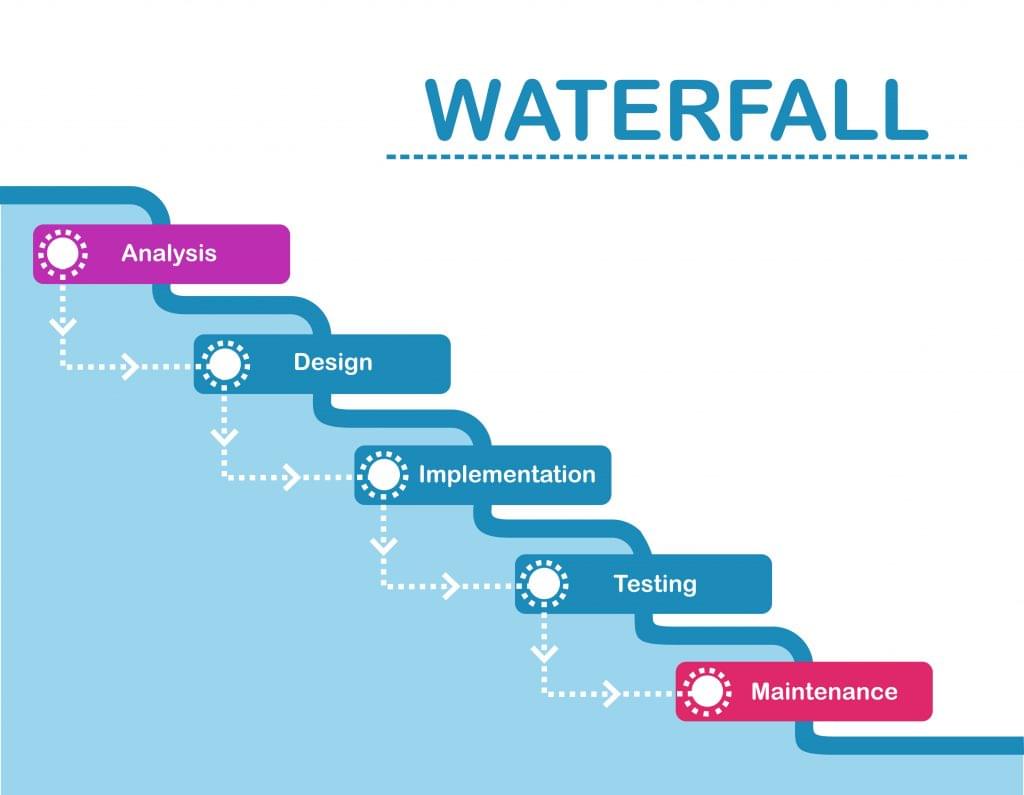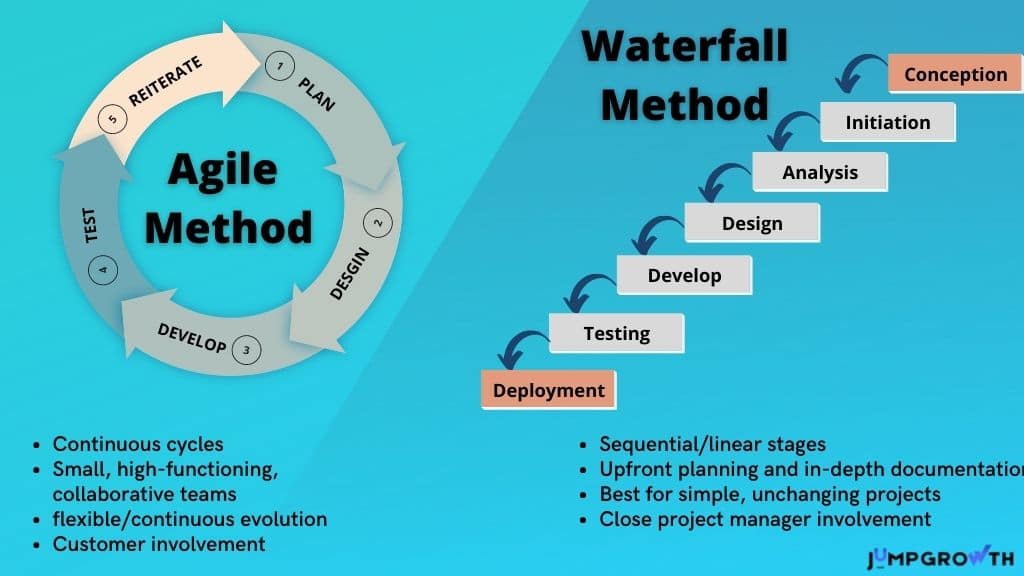Waterfall methodology, also known as the linear sequential lifecycle model, is defined by its linear, structured approach to project management. It is made up of a series of steps that are completed in sequential order within the software development life cycle (SDLC). These steps are typically tracked through Gantt chart visualizations. The processes of the waterfall methodologies are Gathering requirements, Design, Implementation, Verification, and Maintenance. Some benefits of this methodology are:
- - Detailed product requirements and documentation enable new programmers to onboard quickly and easily.
- - Documentation provides a clear scope to the project, enabling project managers to communicate budgets, timelines, and key milestones to interested parties.
Key challenges of the waterfall methodology
- - Clients can find it difficult to outline all of their requirements at the beginning of the project, leading to gaps in documentation.
- - Minimal customer collaboration during the development process can lead to costly changes if the product does not meet expectations.
- - Testers report issues and bugs later in the process, which could have informed an alternative program architecture.
Agile Methodology
In contrast to waterfall development, agile is defined by its iterative approach to project management. Instead of drafting lengthy project requirements at the onset, an agile team breaks out the product into specific features, and they tackle each one under a specific time constraint, known as a sprint.
Agile project management requires a cross-functional, self-organizing team that typically consists of five to nine members. Together, they develop a workable piece of software during each sprint, which combines with other functional code from previous iterations. By the end of the sprint timebox, the team demos their work to stakeholders for feedback, allowing them to be flexible in their approach to software development. Since the team has access to frequent feedback, they can adapt the product roadmap during the development lifecycle to ensure that functionality truly meets user expectations. In a waterfall approach, customer involvement typically coincides with the delivery of the final product, which can be costly when requirements are misinterpreted or documented incorrectly.



Comments
Post a Comment